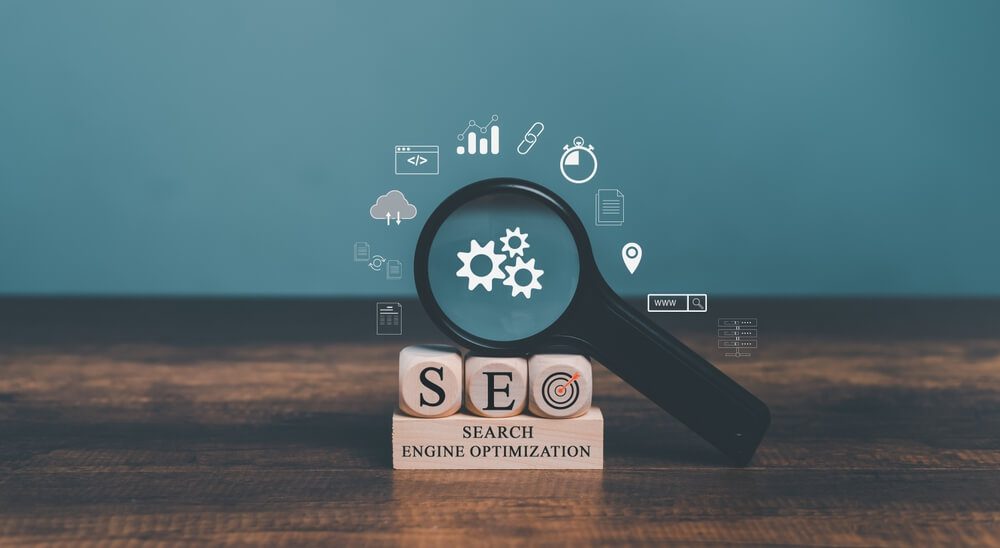
Starter Guide to SEO Essentials for Small Business Success
Are you a startup or a one-person company feeling overwhelmed with digital marketing? Then this small business SEO guide is for you.
This article shares five steps to help you get started. It discusses:
 Keyword targeting remains one of the basic steps in doing small business SEO. It is still how people find you online. However, a lot has changed over the years.
Keyword targeting remains one of the basic steps in doing small business SEO. It is still how people find you online. However, a lot has changed over the years.
 For many reasons, local search optimization is a potent tool for small businesses competing against big brands.
Unlike larger enterprises that must market to a broad, often global audience, small companies frequently cater to a specific regional market. Further, their inherent understanding of their local audience helps them create content that resonates.
Another crucial factor is less competition in local SEO than in national or global optimization. This strategy also increases visibility in Google’s local pack, which lists the top three or more businesses that best answer the query.
Before you appear at the top of searches, you can potentially increase your click-through rate. Most users searching for local businesses are often ready to engage, interact, or buy immediately. Showing up in these local searches means attracting highly targeted traffic with strong conversion potential.
How do you start local optimization? Here are some tips:
For many reasons, local search optimization is a potent tool for small businesses competing against big brands.
Unlike larger enterprises that must market to a broad, often global audience, small companies frequently cater to a specific regional market. Further, their inherent understanding of their local audience helps them create content that resonates.
Another crucial factor is less competition in local SEO than in national or global optimization. This strategy also increases visibility in Google’s local pack, which lists the top three or more businesses that best answer the query.
Before you appear at the top of searches, you can potentially increase your click-through rate. Most users searching for local businesses are often ready to engage, interact, or buy immediately. Showing up in these local searches means attracting highly targeted traffic with strong conversion potential.
How do you start local optimization? Here are some tips:
- Do not skip the fundamentals.
- Choose the right keywords.
- Write quality content.
- Perform local SEO.
- Consistently track your progress.
Want to learn more about the Digital Authority Partners approach to SEO? Watch this video!
1. Do Not Skip the Fundamentals
Many businesses do not succeed in SEO because they mistakenly go straight to the details without knowing the fundamentals:- Why are you running campaigns?
- What do you hope to achieve?
- Who is your target market?
- How much are you willing to spend on optimization?
- Who are your competitors, and what have they been doing?
- Can you beat them? How can you compete aggressively with established brands?
- How do you position your business to make it stand out?
- Establish specific, measurable, achievable, relevant, and time-based (SMART) objectives to guide your business’s growth and track performance.
- Analyze your products and services, the marketplace, and potential or current customers to determine your target market. Consider demographics such as age, gender, education level, occupation, and family situation to understand your customers’ needs and preferences.
- Conduct a competitive analysis to learn more about their products, sales, marketing strategies, strengths, and weaknesses. Then, identify opportunities for differentiation and improvement.
- Narrow down a broad target market to further customize your marketing efforts.
- Monitor industry trends and changes, especially new marketing strategies and tools to apply, best practices, and algorithm updates that can impact your rankings.
2. Choose the Right Keywords
 Keyword targeting remains one of the basic steps in doing small business SEO. It is still how people find you online. However, a lot has changed over the years.
Keyword targeting remains one of the basic steps in doing small business SEO. It is still how people find you online. However, a lot has changed over the years.
- Google’s machine learning now “understands” the differences between Apple, the computer, and the fruit.
- People look for information in different ways. For example, they use more conversational tones when using their voice assistants.
- Once-popular optimization strategies such as counting keyword density, and keyword stuffing, no longer work.
- General information (What are the best summer destinations in Asia?).
- Specific product, brand, or webpage after encountering it in a copy, such as a blog or an ad (types of Hilton guest rooms).
- Brand or product comparisons (Hilton vs. Marriott).
- Information about how to purchase a product or service (Hilton vouchers).
- Create more relevant content.
- Enhance the user experience by accurately answering your target market’s questions.
- Attract more qualified leads.
- Differentiate yourself from competitors and even position yourself as a subject matter expert.
- Match your optimization campaigns to your customer’s journey.
- Adapt your content and strategies quickly as algorithms and user behavior evolve.
3. Create Quality Content
The heart of every good SEO strategy is content. It informs, engages, and entertains the audience. When paired with the right keywords, it places you on the first page, or even better, in the top position. However, it should also be ideal content, which means it should have these attributes:- Helpful or useful.
- Relevant to your target users.
- Easy to understand and scan.
- Visually appealing.
- Well optimized.
- Besides blogs and white papers, consider podcasts, webinars, and short-form videos. Then match the type with the customer journey. For example, case studies work well with B2Bs in the consideration or evaluation stages.
- Use topic clustering to break down lengthy, complex topics while improving your internal linking strategies.
- Make your content interactive with quizzes, surveys, and polls to engage with your audience and gather feedback.
- Take advantage of new technologies such as augmented reality (AR), and virtual reality (VR) for a more immersive user experience.
- Write for humans, not search engines.
- Add media assets such as videos, images, and infographics to break the monotony of text-based copy, improve user experience (especially in ads), and further emphasize your message.
4. Perform Local SEO
 For many reasons, local search optimization is a potent tool for small businesses competing against big brands.
Unlike larger enterprises that must market to a broad, often global audience, small companies frequently cater to a specific regional market. Further, their inherent understanding of their local audience helps them create content that resonates.
Another crucial factor is less competition in local SEO than in national or global optimization. This strategy also increases visibility in Google’s local pack, which lists the top three or more businesses that best answer the query.
Before you appear at the top of searches, you can potentially increase your click-through rate. Most users searching for local businesses are often ready to engage, interact, or buy immediately. Showing up in these local searches means attracting highly targeted traffic with strong conversion potential.
How do you start local optimization? Here are some tips:
For many reasons, local search optimization is a potent tool for small businesses competing against big brands.
Unlike larger enterprises that must market to a broad, often global audience, small companies frequently cater to a specific regional market. Further, their inherent understanding of their local audience helps them create content that resonates.
Another crucial factor is less competition in local SEO than in national or global optimization. This strategy also increases visibility in Google’s local pack, which lists the top three or more businesses that best answer the query.
Before you appear at the top of searches, you can potentially increase your click-through rate. Most users searching for local businesses are often ready to engage, interact, or buy immediately. Showing up in these local searches means attracting highly targeted traffic with strong conversion potential.
How do you start local optimization? Here are some tips:
- Claim your business profiles on Google and Bing.
- Create profiles on review sites such as Yelp.
- Engage with your audience on these review pages. Promptly answer comments and concerns.
- Create unique location pages.
- Focus on mobile-first indexing.
- Use local keywords.
- Seek backlinks from local businesses, news sites, or organizations.
- Implement schema markup.
5. Consistently Track Your Progress
The last, but certainly not the least, step in doing basic small business SEO is tracking your progress. Optimizing your pages for search results is not a one-time activity but a long-term investment. It usually takes about six months to see its positive effects on your bottom line. Because you are pouring in resources during this period, you have to also know if your efforts are worth it or if you need to modify your strategies. Tracking also reveals many types of information about your audience. You can then use the data to develop or improve your products and services. Use several tools to monitor your progress. For example, you can set up Google Analytics to collect data on user behavior and other important metrics. However, all these technologies become more effective when you consistently track them. Consider these ideas:- Set a specific time and day to review your metrics. Conduct an audit at least once or twice every quarter.
- Automate the process.
- Set up alerts.
- Delegate if possible.
- Prioritize the ones that matter most to your business goals.
Summing Up
As a growing business, you can count on SEO to help you compete aggressively against big brands. With smart strategies, like those outlined in the guide above, you are able to emphasize your value to your audience, attract the right leads, and increase revenues while keeping your budget manageable. Do you need help expanding these techniques or scaling your optimization efforts? Digital Authority Partners (DAP) is a small business SEO agency that can help you design a custom solution that aligns with your marketing goals, resources, and audience. Contact us to learn more.Want To Meet Our Expert Team?
Book a meeting directly here



